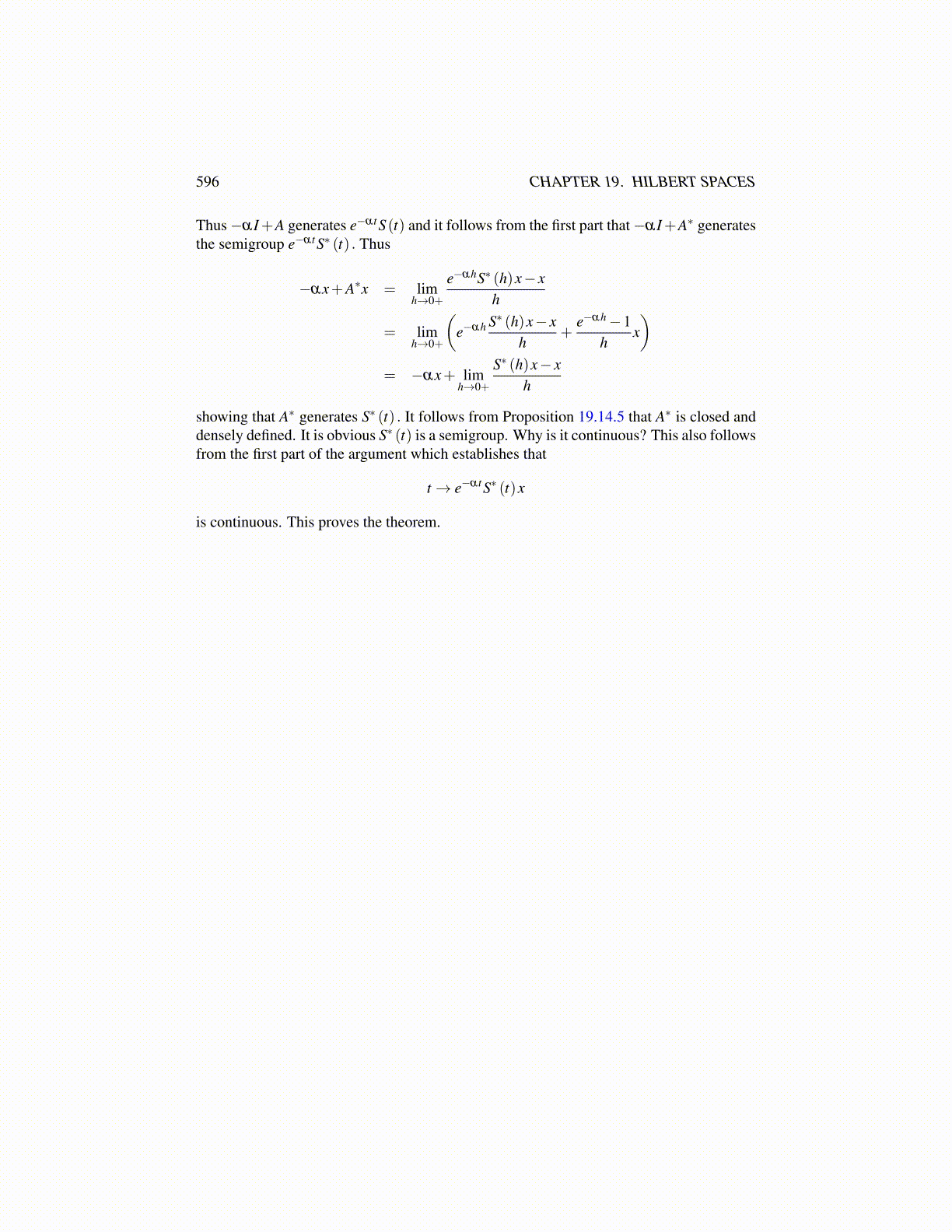
596 CHAPTER 19. HILBERT SPACES
Thus−αI+A generates e−αtS (t) and it follows from the first part that−αI+A∗ generatesthe semigroup e−αtS∗ (t) . Thus
−αx+A∗x = limh→0+
e−αhS∗ (h)x− xh
= limh→0+
(e−αh S∗ (h)x− x
h+
e−αh−1h
x)
= −αx+ limh→0+
S∗ (h)x− xh
showing that A∗ generates S∗ (t) . It follows from Proposition 19.14.5 that A∗ is closed anddensely defined. It is obvious S∗ (t) is a semigroup. Why is it continuous? This also followsfrom the first part of the argument which establishes that
t→ e−αtS∗ (t)x
is continuous. This proves the theorem.